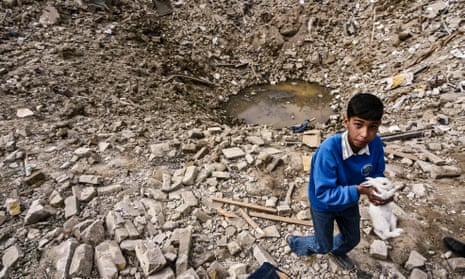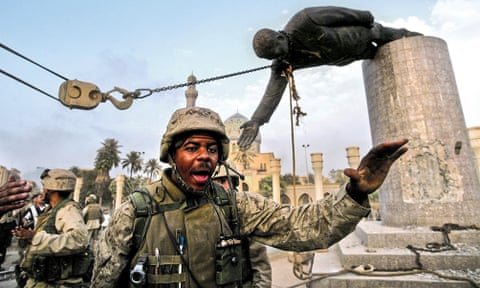In Baghdad’s heart of power, Iraq’s prime minister arrives at work each day in a building once used by Tariq Aziz, Saddam Hussein’s close adviser and foreign minister. The ruins of a Saddam-era defence building still teeter next door, 20 years after an American bomb crashed through its roof at the start of the invasion.
Not far away, the green dome of the Republican Palace – built on the orders of King Faisal II, then used by Iraq’s dictator before being occupied by the US army – sits on top of the still-standing totem of Iraq’s history.

All around the area known as the Emerald City, the political hub of the Iraqi capital, more scattered remnants of the past remain: the Ba’ath party headquarters that was a politburo under Saddam and was transformed into the court that condemned him; the decaying grandeur of Agatha Christie’s house on the west bank of the Tigris; the grave of Gertrude Bell, the British archeologist and Arabist, on the other side of the dying river.
On the road to Baghdad’s airport lies a more contemporary tribute to the Iranian general Qassem Suleimani and his associate Abu Mahdi al-Muhandis, sculpted from the car they were travelling in when a US missile killed them in January 2020.
Other monuments to Iraq’s grand history had stood for thousands of years but barely survived the biggest shock its people had faced in centuries: the war that toppled its long-term leader, launched 20 years ago next week. The invasion, hatched in the wake of the September 11 terrorist attack on the World Trade Center, set in motion a catastrophic civil war, sending millions into exile, and forcing a violent tussle for power and influence that has viscerally changed the region.
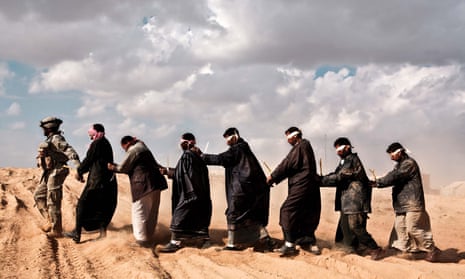
Its legacies include the emboldenment of Iran, as well as the Islamic State (IS) marauders who shredded borders and killed and displaced millions, and the disintegration of Syria.
It was not always that way. As a young US marine sergeant dispatched to Kuwait for the invasion, Ken Griffin had been itching to make a positive difference.
“When we began our march to Baghdad, I was 100% certain we were there for the right reasons,” he says. “When you’re a young marine, it’s unfathomable that the government would lie to you. Or send you to war when it didn’t have to. When you’re in that situation and find yourself in battle, you aren’t hindered by the little things like: “Should we be here?” or “Is that just?” – you know in all your heart that it’s the right thing to do.
“When you see columns of Iraqi soldiers gladly surrendering in exchange for food and shelter, it reinforces that belief. When men, women and children are smiling and waving at your column, you know all you need to know.
“Later, when Iraqis attack you under the cover of darkness, you don’t think it might be the same people who were smiling and waving. These are bad actors, evil people. The ones you came to get rid of. The fact that they could be the same people who smiled and waved: that’s a cynical realisation you won’t be ready for until years later.”
Iraqis greeting American forces as liberators, then fighting them as occupiers, became a reality for troops who had helped topple Saddam and then stayed on, ostensibly to help rebuild the country. By late 2003, George W Bush’s belief that Iraq could be transformed into a democracy at the heart of the Middle East was looking ill-conceived. Within three years, it had become a bloody delusion that had killed several thousand US troops, more than 100,000 Iraqis, and caused the country to spiral into an abyss.
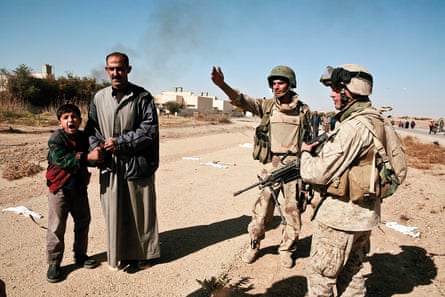
Attempts to promote the rule of law and state foundations barely took root; nor did efforts to break patronage systems that siphoned billions of dollars from state coffers into the pockets of the powerful and networks they used to entrench themselves.
Iraq’s politicians, many of whom were members of exiled groups supported by Iran, were not always committed to nation building or Washington’s project to turn the mess of Iraq into something that could pass as a dignified exit. US support for a little-known MP named Nouri al-Maliki to become prime minister in 2006 was an important period in post-Saddam Iraq. However, the decision to support him for a second time four years later, when a rival had secured more votes in an election, was a defining point in the country’s history.
“Maliki was like the sorcerer’s apprentice,” says Simon Collis, a former British ambassador to Iraq and Syria. “He had wanted to whip up a small storm that would drive Shia voters to support him as the strongman who alone could deal with a threat that he had created.
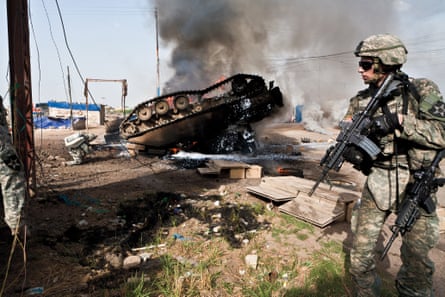
“By the time I arrived in Baghdad in mid-2012, Maliki’s people were systematically dismantling the Sahwa, the moderate local security forces that [US general David] Petraeus had established in [Sunni] Anbar and elsewhere as a bulwark against al-Qaida in Iraq.
“Six months later, Mosul fell to Isis forces as three divisions of the Iraqi army broke and ran. Isis took territory village by village by presenting themselves as the only group who could protect the population from Maliki’s forces and the only group that could protect them from Isis itself, as the central government in Baghdad under Maliki’s leadership could not exert control.”
The IS years were among the darkest in the modern history of the Middle East. Spawned in part from the disaffected Sunnis of Iraq, amplified by the release of Islamist prisoners in Syria to contaminate a civilian uprising, and fed by sectarian leaders in Baghdad who marginalised the country’s Sunnis, the terrorist group was able to lay claim to restoring lost dignities and providing for its people when a government would not.

Through 2014-15, it seized and held a vast swathe of land, establishing a so-called caliphate across part of Iraq and Syria, and directing terrorist acts in neighbouring countries and beyond.
At the height of the IS rampage, several million Syrians left Turkey by boat for Greece, or overland to Bulgaria, with Ankara doing little to stop them, as migration became weaponised as a political tool.
Huge columns of refugees made their way to central Europe, where the support for their plight from the German chancellor, Angela Merkel, drew pushback from the country’s right wing, and fed reactionary ethnic nationalism across the continent.
IS-led terror attacks in 2015-16 in France, Belgium and Germany further fuelled the resurgence of populism and ethnonationalism. “Immigration control was a central theme for Brexiteers, as it was in Poland, France and Italy,” says Rym Momtaz, a consultant research fellow for European foreign policy and security at the International Institute for Strategic Studies.
Donald Trump ran for president on an anti-immigration platform, even banning Muslims from certain countries from entering the US in the early stages of his administration. He showed little interest in addressing the aftermath of the conflict in Iraq, insisting the US withdrawal in 2011 had put a line under Washington’s involvement.
With the body politic and political discourse in Europe undergoing challenges from inward-looking nationalism, and Trump determining to shred the legacy of his predecessors, Iraq soon became a quagmire in which the US and its allies no longer remained invested.
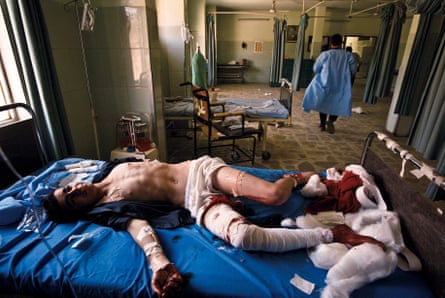
Baghdad is flush with new money now, and the walls that divided the city to stem sectarian violence have mostly been taken down. The city feels safe and prosperous. But the state remains weak and prone to outside interests. Many large new hotels and restaurants are citadels of money laundering. The country remains one of the most corrupt in the world, and the rule of law feeble and often randomly applied.
“The positive has been that we got rid of the dictatorship and toppled the old regime,” says Jassem Obeid, a teacher from the shrine city of Karbala. “We can buy cars and have better living standards; we have more freedoms than before. But the region has become worse, especially for Syria and other countries.”
The view from the largely Sunni province of Salaheddin is different. “The law is not strong now,” says Falih al-Obeidi. “It punishes some and spares others. We are weak; we have so many parties. Only one person should govern Iraq.”
Griffin remains troubled by his time in Iraq. “When people would die, even though they were strangers, it affected me deeply. As a young marine I could look people in the eye and say they died fighting for their country.
“At some point I lost that and just saw the deaths as profound wastes of life. One would assume I’m just talking about friends, or Americans, but I grieved for the massive amount of civilians who were often randomly plucked off the Earth – only guilty of being in the wrong place at the wrong time. Many of them are just struggling to live their lives or maintain some normalcy by having dinner along the Tigris River or keeping their children in school.”
